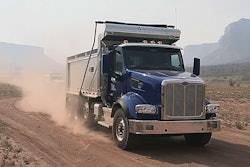The historically tight capacity seen over the past year is indeed in part driven by the implementation of electronic logging devices, said executives from C.H. Robinson last week during the company’s quarterly earnings report conference call. However, they said, it’s not necessarily due to capacity exiting the industry, as often predicted prior to the mandate’s December 2017 effective date.
There was “a lot of projection and speculation around what…percentage of trucks might exit the market or not renew their registration and whether 2 percent, 3 percent, 5 percent of capacity would leave the marketplace,” said C.H. Robinson CEO John Wiehoff, according to a transcript of the call published by Seeking Alpha. “We haven’t really seen any of that. We continue to have very healthy signup of new capacity, and we really, anecdotally, don’t know of much meaningful capacity leaving the marketplace.”
Rather, he said, ELDs’ impact on capacity has come more from one-day trips now taking two days, due to drivers’ more strict adherence to hours of service regulations under ELDs. Electronic logs have caused “uncertainty…with those tweener lanes,” referring to trips pushing the bounds of a one-day run for a driver. “It’s really hard to quantify and to know what it is, but clearly a contributor to part of the current cycle and tight side of the supply.”
Robinson, one of the country’s biggest third-party logistics companies, said it added about 4,400 carriers in the second quarter — a nearly 20 percent increase from the same quarter a year ago and 5 percent more than the first quarter of 2018. “The hard enforcement of the ELD mandate that took effect on April 1i s not slowing our rate of new carrier adoption,” said Robert Biesterfeld, the company’s Chief Operating Officer.
Wiehoff said he anticipates capacity to remain tight through the remainder of the year, despite an influx in orders for new trucks and trailers, which have also set records. “While an increase in new equipment orders may suggest an increase in capacity, we believe the aging truck driver demographics and declining number of new truck drivers, combined with the impact of the April 1 hard enforcement of ELDs, will continue to constrain capacity,” he said.
“While it’s hard to predict these cycles, we do feel like the overall demand, the healthy economy, and the likelihood that that will continue for the remainder of the year is what will keep that market tight.”












